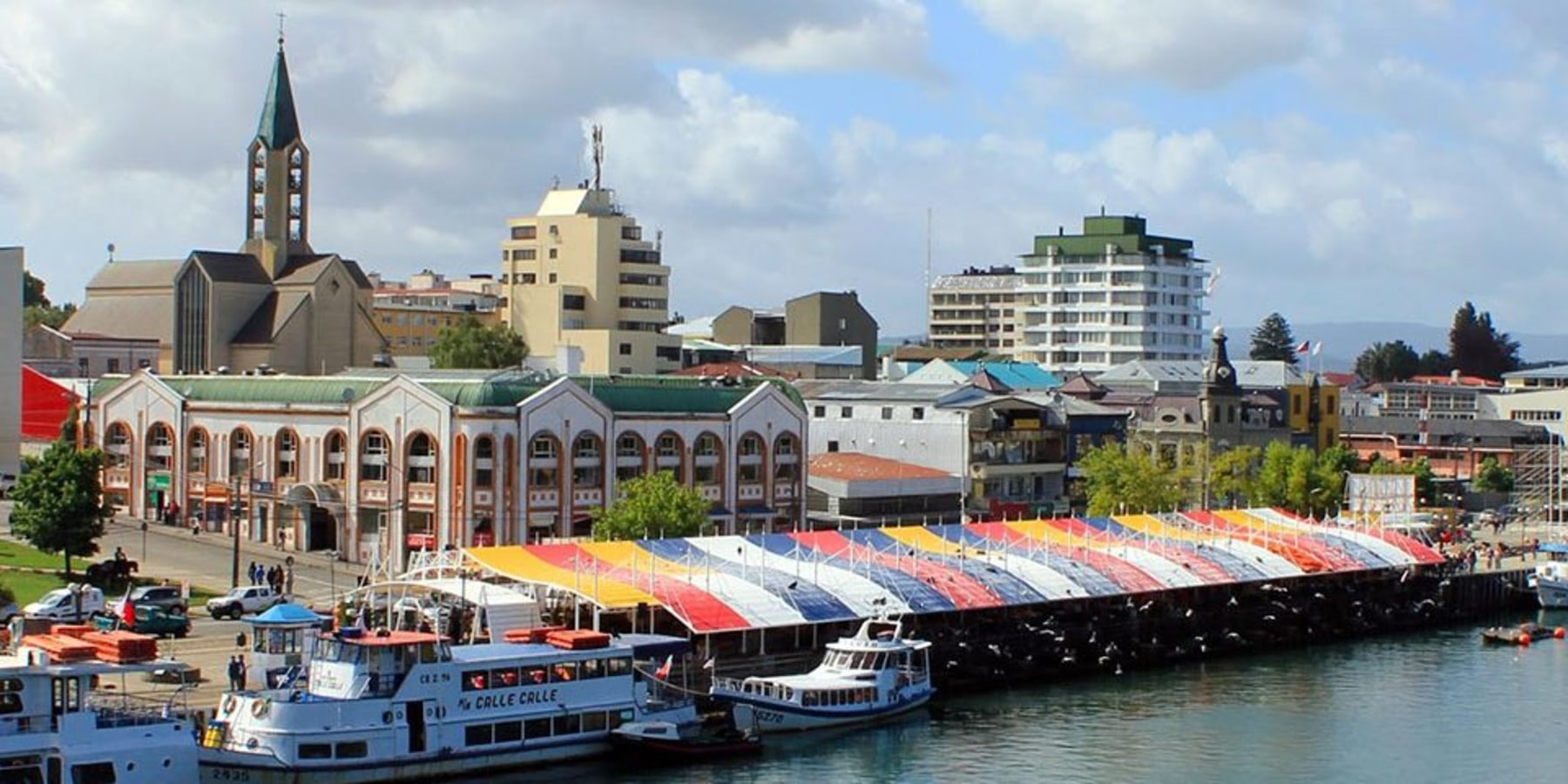
Best time to visit: All year round!
Named after the Spanish conquistador Pedro de Valdivia, this city is found in the south of Chile and is the capital of the Los Ríos region. Where once Valdivia and Chiloé were the southernmost outliers of the Spanish Empire, today Valdivia is home to history, culture and delicious food and drink. Here’s everything you need to know.
How to get there: Again, if coming from Santiago, your first option is taking a flight to Aeropuerto Pichoy (located 32 km north of Valdivia). Prices range between $29000 CLP (Sky Airlines) to $45000 CLP (LATAM) for a 1 hr. flight. A somewhat cheaper alternative would be taking a bus to Terminal Terrapuerto Valdivia (located near downtown Valdivia), with prices ranging between $15000 CLP to $30000 CLP during the low season to $25000 CLP to $50000 CLP during the high season (this being during summer or near a national holiday) Be prepared, 'cause it's going to be a long 9hrs trip, so best choose what we call a Bus-cama or Semi-cama service for best comfort! While in Valdivia, your cheapest and safest transportation alternative is taking a taxicab (yellow on top, black on the lower area) which starts their services at around $50 CLP per 100 mts. For those heading to the coastal areas, like Niebla or Los Molinos, the best choice is taking either the number 20 bus (most are orange-liveried) from downtown or one of the many "Expreso a la Costa" buses from their terminal in downtown Valdivia, at Calle Chacabuco. Currently, there are prices between $650 CLP for a trip to Playa Grande in Niebla and $800 CLP to Los Molinos
What to do:
Hop on the Valdivian steam train, which dates back to 1913 and is the only one in Chile that still operates. Journey alongside the Calle River towards Antilhue, sit back and enjoy the scenic route with luscious green surroundings before jumping off at the stops Pishuinco and Huellelhue to shop for souvenirs and taste the local specialities.
Foodies should head to the Valdivia food market and taste the traditional Chilean cuisine as well as the local produce, which includes a wide variety of fresh fish. Despite barely standing in the 1960 earthquake, the 1918 building underwent renovation and was reinforced as a shopping and dining complex. Try the Valdiviano, a local meat and vegetable soup, or taste the choritos al ajillo, mussels with garlic and chillies; another foodie delight is the Crudo, our very own take on a German dish called Mett. For the real experience (i.e. the best crudos in town), go to Cafe Das Haus at O'higgins st.
If you're in the mood for beers, most people around the area will recommend you to visit Kunstmann Brewery, one of the oldest, if not THE oldest, breweries in operation in this part of the country. While nowadays, it's currently under the ownership of a macro-brewery (CCU), the quality of its products remains, and its well-known"Kunstmann Experience Tour" allows you to get in touch with the ins-and-outs, of a modern brewery while at the same time, learning about the history of the German settlers that arrived in the area and the history of beer in Chile. (Tours start at 12:00 pm, one every an hour and a half, till 8 pm during the low season). There are two types of tour: A history-focused one that takes about 45 minutes and costs $10000 CLP ($14 USD) and the full factory tour, which takes 90 minutes ($16000 CLP // $22 USD). Both tours end with a sampling of beer, and you get to keep the beer mug!
History buffs can get their fix with a trip to "Castillo de la Limpia y Pura Concepcion de Monfort de Lemus" (better known as Fuerte de Niebla), which is one of the last still standing Spanish-made fortifications that protected the southern part of Chile from the attacks of buccaneers, the invading forces of the Dutch and British and anyone who wanted to disrupt the powerful reign of the kingdom of Spain.
For those interested in the history of the German colonists and settlers that arrived later, a walk from downtown Valdivia to Teja Island only takes 15 minutes and is a good reach of the Cultural Campus of the Universidad Austral de Chile and its museums. (The Maurice Van de Maele History and Anthropological Museum and the R.A. Phillippi Museum of Exploration and Nature) Both are free of charge! (A suggested tip for their guides and caretakers is indicated but not mandatory)
And for those who would like to visit the many rivers that surround the city, why not take one of the many boat tours that start from the Costanera? You'll get to see the city from a different perspective (considering that it was the site of THE LARGEST EARTHQUAKE in the history of mankind with its 9.5 registers on the Richter Scale!) and, if you're lucky enough, be able to observe the varied species of birds that live on the many canals and riverbanks. Feel blessed if you can spot a couple of black-necked swans swimming along the boats, feeling undisturbed!

